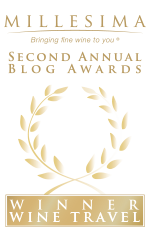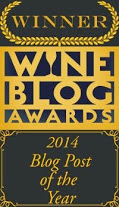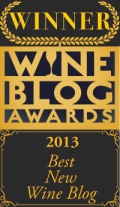
Sun setting on Château Beychevelle in Saint-Julien.
New year, new you, right? How about new drinking goals instead, like finding ways to experience the fabled Bordeaux that sommeliers like to brag ignited their passion for wine — but without going broke. Left Bank or Right Bank, Pauillac or Pomerol, the finest bottles from the chateaux of these vaunted lands, at hundreds of dollars, occupy an aspirational category few can afford to indulge in regularly, if ever. Unfortunately, the cheaper wines miss more often than they hit since quality varies wildly by vintage and producer. Unlike the reliability of a $15 Chilean chardonnay, one needs guidance when shopping for Bordeaux.
Looking for tips on finding value (as defined by QPR, or quality-to-price ratio), I turned to Hortense Bernard. Bernard is the general manager of Millesima USA (1355 2nd Avenue; 212-639-9463), the American arm of France’s leading online wine retailer. Bernard knows a thing or two about wine, and not only because she grew up tasting it as a bébé. Representing the fourth generation of a venerable Bordeaux family, Bernard moved to NYC in 2011 to lead the company’s U.S. operations. Millesima USA offers an impressive selection of fine and rare wines from France, Italy, and the New World, both online and in the brick-and-mortar store on Manhattan’s Upper East Side.
Bernard shared the following five tips, and does the homework for you by recommending wines she carries in each category. If you commit these to memory, however, you’ll be drinking better Bordeaux for a dime no matter where you are (well, more like a quarter).
(For an even deeper look at the region, check out the Bordeaux wine council’s website, which provides info on grapes, appellations, and deciphering a label).
Smaller Vintages: Smaller, according to Bernard, does not reference the actual size or quantity of production, but rather denotes a “classic” Bordeaux vintage that is perfect for drinking but did not make it to the investment market. These wines are ready to consume earlier, are less expensive, and easier to approach and understand by novices than the greatest vintages. Weather is a key factor in determining the characterization of the harvest, but winemakers also have a major impact. Bernard offers the 2002 vintage as an example: it did not get a lot of attention when it was released; the American market ignored it. However, she says 2002 is drinking “amazingly” right now. She adds that for some estates, the 2002 shows the typical aromas of mature Bordeaux without having to find (and pay for) a 20 to 30-year-old bottle. Bernard emphasizes that the wines won’t have the depth and complexity of long-lived vintages, but drinking them will help neophytes familiarize themselves with the pleasures of aged examples.
Chateau Haut-Batailley, Pauillac, Grand Cru Classé, 2006, $51.99
Château Grand Corbin-Despagne, Saint-Emilion, Grand Cru Classé, 2004, $37.99
Fifth Growth: The 1855 classification in Bordeaux is one of the most famous aspects of the region’s wine industry. All collectors want classified wines, and the top Grand Cru Classés like Château Margaux or Château Latour have prices commensurate with their prestige and demand. The historic ranking (commissioned by Napoleon III for a world’s fair of sorts) of Sauternes and top cabernet-dominant Left Bank estates into five classes, raises some contemporary issues like the exclusion of exemplary estates and appellations (for example, everything on the merlot-heavy Right Bank), and the fluctuation in quality by several ranked chateaux. Regardless, Bernard advises that it’s easier to learn about this very expensive category by starting with the fifth growths because “most of them are affordable and real treasures.” She offers Chateau Batailley in Pauillac as a fifth growth that consistently receives Parker scores ranging from 88 to 94.
Chateau Batailley, Pauillac, 2012, $43.
Cru Bourgeois: “They are the best-kept secret and most misunderstood of Bordeaux wines,” says Bernard, explaining “the Cru Bourgeois classification is a list of wines from the Médoc that were not included in the Classification of 1855, but are still of high quality and represent great and approachable wines that typically retail for under $40 per bottle.” The wines, she says, are all about fruit, perfect for everyday consumption. Cru Bourgeois gives drinkers the opportunity to experience a renowned vintage from a famous appellation and a famous proprietor, relatively (a key word) inexpensively. For example, one can try the highly-regarded 2009 vintage for $25 with Chateau Peyrabon, or a famed Bernard Magrez property (he is the sole owner of four Grand Cru Classé estates) with the 2010 Grand-Chênes for $35.
Chateau Peyrabon, Haut-Médoc, 2009, $25
Bernard Magrez Chateau Les Grand Chenes, Médoc, 2010, $35

Inside Millesima’s NYC store.
Second Labels: Bernard says that one of the best ways to experience great Bordeaux without spending too much money (again, relative), are second labels. Drinkers can buy wines from top estates, top vintages, and top winemakers, at a fraction of the price. The concept of “second labels”’ came into being in the 18th century when winemakers were deciding what grapes to use for their first bottling. Instead of disposing of the leftover fruit or selling it in bulk, producers bottled a second wine, derived from the same terroir and winemaker. The grapes were not damaged; they simply did not make the flagship cut. Second labels used to be reserved for the family, but they are now a strong segment of the market. Croix de Beaucaillou is a good example of a second label. The first label, Ducru Beaucaillou, a Saint-Julien second growth, on average retails for over $200 per bottle and is consistently a top-selling and highly rated wine year after year.
Croix de Beaucaillou, Saint-Julien, 2008, $42.
Lacoste Borie, (the second label of Château Grand-Puy-Lacoste, a fifth growth), Pauillac, 2004, $34.99.
Lesser-known Appellations: Bernard suggests looking for quality-minded estates in lesser-known appellations such as Moulis, or any satellite of Saint-Emilion, Barsac, Médoc, etc. Generally, those areas do not have the same reputation as the best-known appellations, since they lack classified estates, but they still have great terroir. Treasures can be found, but hunters should engage a Bordeaux connoisseur to help discover them as most estates will not have scores.
Chateau Beaulieu Comtes de Tastes, Bordeaux Superieur, $17











